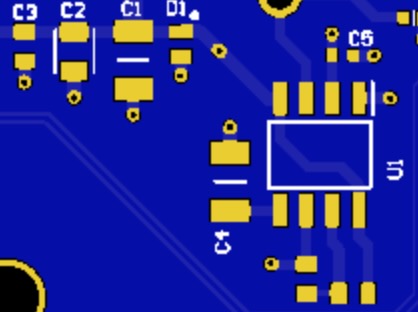Exact Measurement? For Innovation, and Progress
A coherence-based Noise Reduction System, approaches a time-independent reference, or exact standard, for the measurement of time. Download summary of scientific research here.
Improvements In Energy Levels, Job Satisfaction, and Creativity With Coherence Technology

Areas of Application of Coherence Technology Pdf download here: https://www.upgradingtechnology.com/support-files/areasofapplication.pdf
Behavioral And Productivity Studies
A test questionnaire was given measuring energy and stress levels, psychological and physiological response to computers and telephones, job satisfaction, and productivity.
There were a total of 47 employees in five different groups (from several companies including International Monetary Fund, Telegroup, Reading's Fun, and others.)
The test questionnaire was filled out by each employee before the installation of the CT.
CT was installed at each workstation for a period of two weeks. At the end of two weeks the test questionnaires were filled out again.
In each study, the daily work routine was not altered except for the installation of the CT. The questionnaires were then calculated to determine the individual’s overall rating. These individual ratings were then averaged within each group to determine the final result.
The five different groups showed improvements ranging from 17.9 to 31.8% at the end of the two-week period with the CT connected.
(In the studies where the CT was removed, a reversal of improvements, ranging from 19.2 to 24%, occurred.)
At the International Monetary Fund in Washington DC:
Sixteen CT Software programs were installed on Computers in the External Relations Department and the Administration Department's Graphics Sections of the IMF. Staff in those departments completed a questionnaire indicating the following benefits:
- All members reported that the Coherence Technology Software was easily installed and interfaced with existing software without any compatibility problems.
- All CT Software users reported positive benefits in the area of personal and business relationships. Staff members reported smooth and easy interactions with others, both at home and in the office.
- Almost all reported that they were driven to work on their computers – a necessity for those who earn their living at the computer.
- There was also relief from the physical stresses and strains of working at the computer, such as eyestrain, and aches in the neck and shoulder, that can hamper creativity and productivity.
- Customer Service Staff, who spend 6-8 hours a day in the very stressful and demanding job of resolving staff member’s problems, showed a remarkable upbeat disposition after the CT Software was installed.
- One of the most obvious effects has been the impression of other teams of experts from other buildings. They view the Coherence Technology test group as much more relaxed, professional, and the place they want to be if given an opportunity. Read International Monetary Fund letter.
Applications
Improving organizational behavior with Coherence Technology (CT) presents substantial benefits for scientists, technologists, innovators, and new product developers. This technology, which aims at enhancing coherence within organizational settings, can lead to notable improvements in various facets of workplace dynamics, including energy levels, job satisfaction, and overall creativity. Here are some benefits and potential applications:
### Benefits
1. **Enhanced Energy Levels**:
Implementing CT in work environments can boost the energy levels of employees, leading them to feel more invigorated and less fatigued. This can lead to enhanced productivity and better engagement with tasks.
2. **Increased Job Satisfaction**:
CT's positive impact on work environments can significantly increase job satisfaction rates among employees. Higher satisfaction is linked to reduced turnover rates and improved loyalty and commitment.
3. **Boosted Creativity**:
By minimizing stressors like physical discomfort and enhancing interpersonal relations, CT can create an environment conducive to creative thinking and innovation. Employees are likely to feel more comfortable expressing new ideas and exploring creative solutions to problems.
4. **Improved Physical and Psychological Health**:
Employees reported relief from physical discomforts, such as eyestrain and musculoskeletal pain, as well as better psychological states. This can lead to fewer health-related absences and a more energetic, present workforce.
5. **Enhanced Interpersonal and Professional Relationships**:
With CT, staff experienced smoother and easier interactions, which are crucial for collaborative environments and for maintaining professional relationships both within and outside the organization.
### Potential Applications
1. **Corporate Offices**:
Install CT systems across various departments to improve staff well-being and productivity, from higher executive functions to more technical and creative roles.
2. **Creative Industries**:
Utilize CT in fields like design, marketing, and other creative sectors where job demands can be highly stressful and creativity is paramount.
3. **Technology Companies**:
Tech companies, especially those with intense work environments, can benefit from CT to keep their staff focused and satisfied, reducing burnout in roles that involve long hours in front of computers.
4. **Customer Service Centers**:
Deploy CT in customer service departments to help manage stress and improve the disposition of staff members, directly influencing customer satisfaction and loyalty.
5. **Healthcare Facilities**:
Implementing CT in healthcare settings can help manage the stress levels of healthcare professionals, thereby impacting their ability to provide care and make critical decisions.
6. **Educational Institutions**:
In academic settings, both among students and staff, CT can enhance the learning and teaching environment by reducing stress and improving relationships.
The data from the International Monetary Fund and other organizations illustrates the practical benefits of applying CT to enhance organizational behavior. This underscores the importance of investing in technologies that not only advance business outcomes but also prioritize human factors in workplace design and management. This approach not only improves productivity but also fosters a healthier, more creative, and ultimately more sustainable workforce.